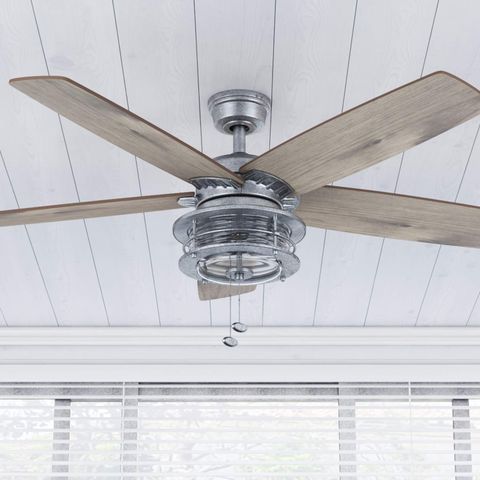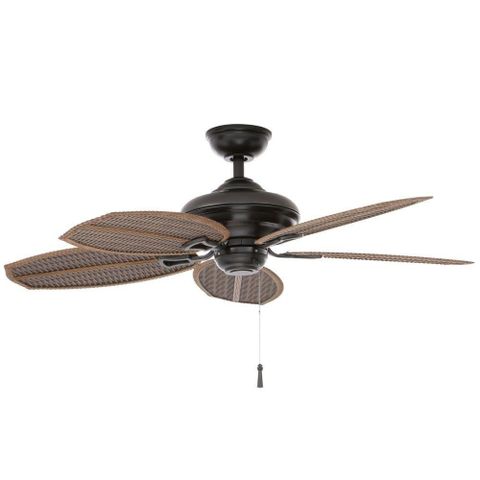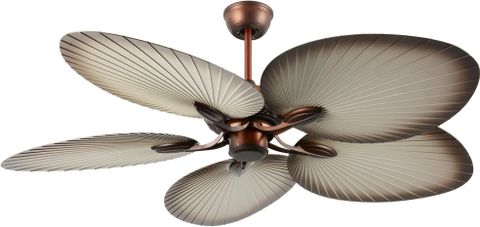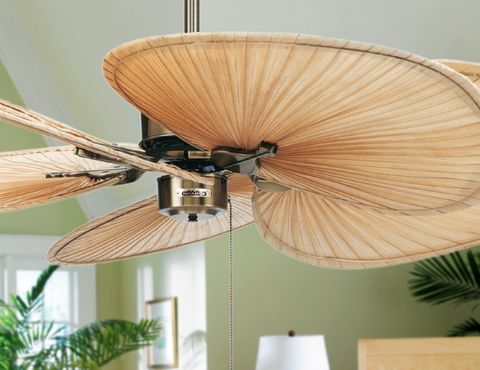Picture this: It’s a sweltering summer afternoon, and you’re trying to enjoy your backyard while the humidity makes everything feel sticky and uncomfortable. What if there was a way to keep your outdoor area pleasant and cool, even when the weather gets tricky? That’s exactly what humidity-resistant ceiling fans are designed to do. They’re not just another gadget – they’re your secret weapon for making the most of those beautiful outdoor moments.
Outdoor living spaces have become more important than ever. Whether it’s a covered patio, a deck, or a garden area, we want to extend our living experience beyond the four walls of our homes. But let’s face it – humidity can quickly turn a pleasant outdoor evening into an uncomfortable struggle. That’s where the right ceiling fan becomes invaluable. These aren’t your typical indoor fans; they’re specially engineered to handle the elements. They’re built tough to withstand moisture, heat, and the occasional gust of wind. Think of them as the unsung heroes of outdoor comfort. When properly chosen and installed, these fans can transform your outdoor areas into year-round gathering spots.
Understanding Humidity Challenges in Outdoor Spaces
Humidity isn’t just about feeling muggy. It’s about the actual moisture content in the air, which affects how we perceive temperature. When humidity levels rise, sweat doesn’t evaporate efficiently from our skin, making us feel hotter than the actual temperature. In outdoor settings, this problem is compounded by several factors. First, open-air environments lack the controlled conditions that indoor spaces provide. Second, outdoor areas often experience direct sunlight, which heats surfaces and increases evaporation rates. Third, poor air circulation can trap hot, humid air in low-lying areas. This combination creates a perfect storm for uncomfortable outdoor conditions. Many people think that a regular ceiling fan will work outdoors, but that’s simply not true. Regular indoor fans aren’t built to handle the constant exposure to moisture, sun, and temperature fluctuations. They’ll deteriorate quickly, leading to expensive replacements and ongoing maintenance issues.
Key Features of Humidity-Resistant Ceiling Fans
The difference between a good outdoor fan and a great one lies in its construction and materials. Humidity-resistant fans are built with specific features that set them apart. The motor housing is typically made from aluminum or stainless steel, which resists corrosion better than standard materials. These fans also feature sealed bearings that prevent moisture from entering critical components. Water resistance ratings matter – look for fans rated IP44 or higher for outdoor use. The blades themselves are often made from materials like plastic, aluminum, or composite materials that won’t warp or degrade under UV exposure. Some models include rust-proof hardware and weatherproof wiring. These aren’t just marketing claims either – they represent real engineering solutions to real problems. For instance, a fan with proper sealing can handle splashes and light rain without damage, while a standard fan might fail after just a few months of exposure to the elements.
Choosing the Right Fan Size and Style for Your Space
Size matters when it comes to outdoor ceiling fans. A fan that’s too small won’t provide adequate airflow, while one that’s too large can create uncomfortable drafts or appear out of place. For smaller outdoor areas like covered patios or decks, a 36-42 inch diameter fan works well. Larger spaces such as pool areas or expansive decks may need fans that are 52-60 inches in diameter. Consider the ceiling height too – fans should hang between 7 and 9 feet from the floor for optimal performance. The style of the fan also plays a role in both function and aesthetics. Blade styles range from traditional curved designs to modern sleek options. Some fans come with integrated lighting, which can add both functionality and ambiance. When selecting a fan, think about how much space you actually need to cover. A 12-foot by 12-foot area requires a different approach than a 20-foot by 30-foot space. The right size ensures efficient air movement and prevents energy waste.
Installation Considerations for Outdoor Environments
Installing an outdoor ceiling fan is more involved than an indoor installation, and that’s perfectly normal. The first step is ensuring your electrical setup can handle the fan’s requirements. Most outdoor fans need dedicated electrical circuits, especially if they include lighting or remote controls. Mounting hardware is crucial – you’ll need to verify that your ceiling structure can support the fan’s weight, plus the additional load of outdoor conditions. Weatherproof electrical boxes must be used to prevent water damage. The mounting bracket itself should be designed for outdoor use, often featuring stainless steel fasteners. Professional installation is recommended for most people, particularly for higher ceilings or complex mounting situations. Many retailers offer professional installation services, which can save you time and potential headaches. Don’t overlook the importance of proper ventilation around the fan – ensure there’s adequate clearance from walls and other obstacles.
Maintenance and Longevity Tips
Outdoor fans require regular care to maintain their effectiveness and lifespan. The good news is that with proper maintenance, these fans can last 10-15 years or more. Regular cleaning is essential – remove dust and debris from blades and housing monthly. Check for loose connections periodically, especially after storms or high winds. Lubricating moving parts according to manufacturer guidelines helps maintain smooth operation. Inspect the fan regularly for signs of wear, such as rust spots or damaged blades. Most manufacturers recommend annual professional servicing to ensure all components remain in working order. Keep an eye on the motor’s performance – unusual noises or reduced airflow could indicate maintenance needs. Simple things like covering the fan during extended periods of non-use can extend its life significantly. Some people choose to use protective covers when not in active use, which can be particularly helpful in harsh climates.
Energy Efficiency and Smart Technology Options
Modern humidity-resistant fans incorporate smart technology that makes them more efficient and user-friendly than ever before. Energy-efficient motors can reduce power consumption by up to 50% compared to older models. Many fans now feature remote controls or smartphone apps that allow you to adjust speed and timing from anywhere. Some models include built-in sensors that automatically adjust fan speed based on room conditions. LED lighting options are increasingly common, providing bright illumination while consuming minimal electricity. Smart fans can integrate with home automation systems, allowing you to control multiple fans simultaneously or set schedules for automatic operation. These features don’t just make life easier – they also contribute to lower utility bills and more sustainable outdoor living. Consider how often you’ll use the fan and whether smart features would enhance your lifestyle. The investment in smart technology often pays off through convenience and energy savings over time.
Humidity-resistant ceiling fans represent more than just a cooling solution – they’re an investment in creating comfortable, usable outdoor spaces. When you choose the right fan for your specific environment, properly install it, and maintain it regularly, you’re essentially extending your living area seasonally. These fans transform outdoor spaces from uncomfortable zones into welcoming gathering places. The key is understanding what makes a fan suitable for outdoor conditions, from material selection to proper installation practices. Whether you’re entertaining guests, relaxing after work, or simply enjoying nature, a quality outdoor fan can make all the difference. The initial investment pays dividends through improved comfort, extended outdoor living seasons, and increased property value. With the right approach to selection, installation, and maintenance, your outdoor spaces can become the highlight of your home rather than a source of discomfort.














